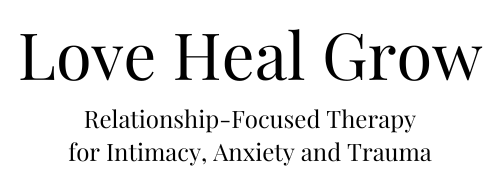
Have you been feeling down, especially at work? Do you have a hard time getting activities started, and once you start, is it hard to build momentum? Are things that you normally enjoy a hated chore? If so, you might be dealing with burnout, depression, or both.
Depression and burnout are two distinct yet often interrelated mental health conditions that can significantly impact your well-being and quality of life. While they share some common symptoms, they also have key differences that set them apart. Recognizing these differences is crucial for accurate diagnosis and effective treatment. Today, let’s talk about the symptoms of depression and burnout, and how you can tell if you’re dealing with one or both.
What Is Depression?
Depression is a complex mental health condition that has symptoms like persistent and pervasive feelings of sadness, hopelessness, and a loss of interest or pleasure in previously enjoyable activities. Depression can be recurring throughout a person’s life, and can be linked to major life events; even joyous occasions, like the birth of a child, can lead to postpartum depression and postnatal depression in the non-birthing partner.
Here are some of the common symptoms associated with depression:
- Persistent Sadness: Individuals with depression often experience a deep and enduring sense of sadness. This sadness may be accompanied by feelings of emptiness and despair. Sometimes depression manifests as the inability to feel any emotions, leading to a feeling of numbness.
- Loss of Pleasure: Beloved hobbies, socializing, and even basic self-care may become burdensome thanks to depression. You may find it hard to take joy in anything, even things that you truly love.
- Fatigue: Depression often leads to significant physical and mental fatigue. Even getting out of bed and performing daily tasks can feel overwhelmingly exhausting. It can also lead to brain fog and have cognitive effects that impact your ability to function the way you want.
- Changes in Sleep Patterns: People with depression may experience disturbances in their sleep patterns. This can manifest as insomnia or excessive sleeping; it varies from person to person.
- Feelings of Guilt or Worthlessness: You may experience irrational feelings of guilt, self-criticism, or worthlessness.
- Difficulty Concentrating: Depressive episodes often impair concentration and decision-making abilities.
- Suicidal Thoughts: In severe cases, depression may lead to suicidal thoughts or behaviors. Please seek help immediately if these thoughts arise.
What Is Burnout?
Burnout, on the other hand, is not classified as a mental disorder itself. Instead, it’s a psychological response to chronic workplace stress. It typically occurs when you are exposed to prolonged periods of excessive work demands without sufficient opportunities for rest and recovery.
Here are some of the common symptoms associated with burnout:
- Physical and Emotional Exhaustion: Burnout is characterized by overwhelming physical and emotional fatigue. You may feel drained, depleted, and unable to cope with work-related stressors.
- Reduced Performance: A decline in job performance and productivity is a hallmark of burnout. Tasks that were once manageable become increasingly difficult to complete, and you may not see the point in doing them.
- Cynicism and Detachment: People experiencing burnout often develop a sense of cynicism and detachment from their work, colleagues, and even personal relationships.
- Reduced Professional Efficacy: Burnout can result in feelings of inadequacy and reduced professional efficacy. Individuals may doubt their abilities and effectiveness in their roles.
- Physical Symptoms: Physical symptoms such as headaches, gastrointestinal issues, and sleep disturbances can be prevalent in those suffering from burnout.
The Relationship Between Depression and Burnout
Depression and burnout can have something of a reciprocal relationship, creating a vicious cycle that’s very challenging to deal with.
Both depression and burnout share common symptoms, such as fatigue, reduced performance, and emotional exhaustion. These overlapping signs can make it challenging to distinguish between the two. Prolonged exposure to high levels of stress in the workplace, a common cause of burnout, can trigger or exacerbate depression. Chronic stress can lead to chemical changes in the brain, affecting mood and emotional regulation. Burnout and chronic stress can also erode self-esteem and self-identity, which are closely related to depressive symptoms. When you experience burnout, you may question your self-worth, which can contribute to or worsen depression.
Another major issue is that both depression and burnout can lead to social withdrawal and isolation. Individuals experiencing these conditions may become more socially disconnected, amplifying feelings of loneliness and despair. This can be especially true in a WFH situation, where you aren’t obligated to meet with coworkers.
Finally, both burnout and depression can lead to unhealthy, ineffective coping methods. These may include substance abuse or self-isolation, which can further exacerbate depressive symptoms. The good news is that you can break this cycle. By understanding the connection between depression and burnout, you can
Understanding the connection between depression and burnout is vital for effective treatment and prevention. Addressing the underlying causes of burnout and providing mental health support can break the cycle and improve an individual’s overall well-being.
Coping With Depression and Burnout
Depression and burnout are two distinct mental health challenges that often coexist and even exacerbate each other. Coping with these conditions requires a multifaceted approach that combines self-care, professional help, and a deeper understanding of the connections between them.
First, it’s important to figure out whether you’re dealing with depression, burnout, or both. The two conditions have some key differences, one of which is duration. Depression is characterized by long-lasting and recurrent episodes, with symptoms often persisting for months or even years. Burnout, while persistent, tends to be more time-bound and is closely linked to work-related stressors. If you can link your symptoms back to increased stress at work, it’s a sign that it may be burnout.
Another key difference is the response to rest. Burnout symptoms tend to improve significantly with adequate rest and a reduction in work-related stress. Talk to your supervisor or HR department about your workload and the stressors you are facing. They may be able to make adjustments or provide additional support. Depression, on the other hand, often requires professional treatment, including therapy. It likely won’t go away after a short break from work. If you’re still struggling after time away from work, depression may be your key issue.
Regardless of whether you have depression, burnout, or both, there are some coping strategies that can really help you. Professional help from a mental health expert can help you develop an accurate diagnosis. Therapy, like cognitive behavioral therapy and other forms of psychotherapy have been proven effective in treating depression and burnout. These therapies help individuals identify and change negative thought patterns and behaviors.
Therapeutic help is most effective when you have other coping strategies in your life. A support system of friends and family can also really help; connecting with others can alleviate the sense of isolation that often accompanies burnout and depression. You should also try to prioritize self-care, including regular exercise, a balanced diet, and adequate sleep. Physical health is closely connected to mental well-being, especially sleep; if you’re not getting enough sleep, it’s harder for your brain to make new connections and heal.
At Love Heal Grow, we want to help you find balance in your life. Dealing with depression or burnout is never easy, and our therapy team is here to help you find your answer. If you need help figuring out what’s going on with the stress and negative feelings in your life, schedule today– we’re here to help.
























